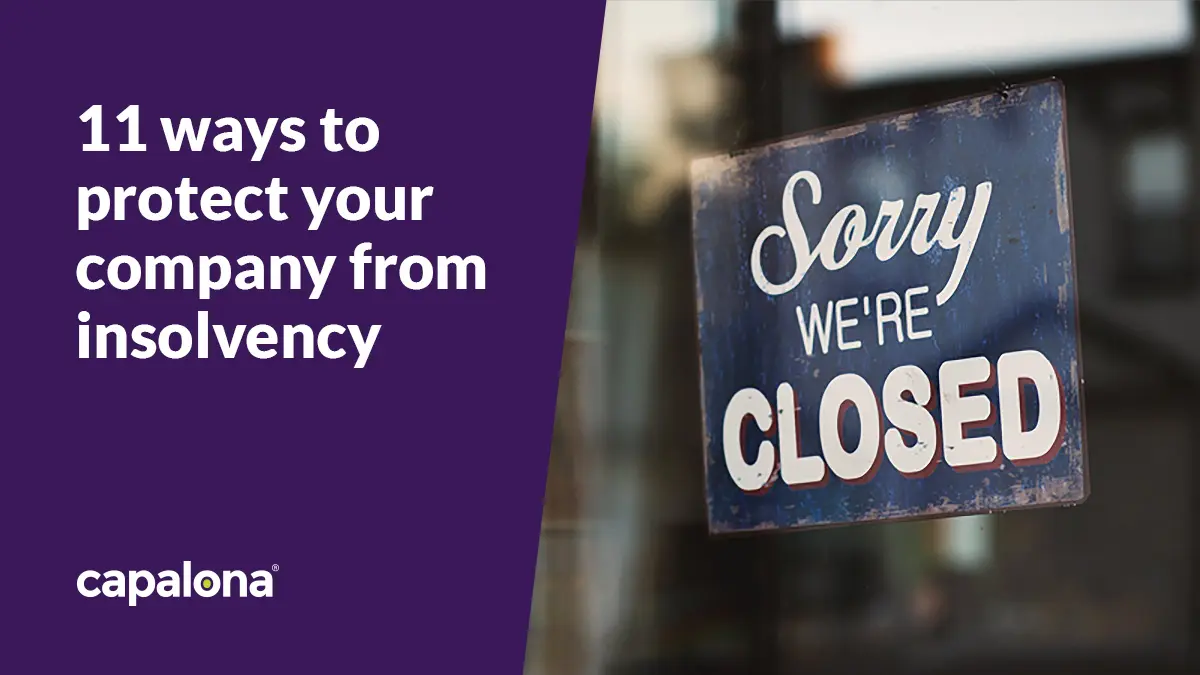The Best Guide To Insolvency Practitioner
The Best Guide To Insolvency Practitioner
Blog Article
8 Easy Facts About Insolvency Practitioner Explained
Table of ContentsNot known Details About Insolvency Practitioner The Ultimate Guide To Insolvency PractitionerIndicators on Insolvency Practitioner You Need To Know4 Easy Facts About Insolvency Practitioner DescribedAn Unbiased View of Insolvency PractitionerSome Known Questions About Insolvency Practitioner.Facts About Insolvency Practitioner Uncovered
Insolvency is when liabilities are higher than the worth of the company, or when a borrower can not pay the debts they owe. A firm can come to be financially troubled because of a number of circumstances that result in bad cash money flow. When encountered with bankruptcy, a business or person can contact lenders directly and restructure financial debts to pay them off.Service owners may contact lenders directly and restructure debts into even more workable installments. Lenders are normally open to this method because they want to be settled and prevent losses, even if the settlement is on a postponed routine.
Insolvency Practitioner for Beginners
The proprietor produces a proposition detailing exactly how the debt may be reorganized using price decreases or various other plans for assistance. The proposition shows financial institutions just how the business might create sufficient capital for rewarding procedures while paying its financial obligations. Usually, a forgiven financial debt might be thought about revenue by the Internal Income Service (INTERNAL REVENUE SERVICE).

A Biased View of Insolvency Practitioner
Business may wind up paying large amounts of cash in damages and be overcome operations. When operations cease, so does the business's revenue. Lack of earnings leads to accounts payable and financial institutions asking for cash owed to them. Some business come to be financially troubled due to the fact that their goods or services don't evolve to fit consumers' changing demands.
Costs surpass earnings and bills remain unpaid. Kinds of insolvency consist of cash-flow insolvency and balance-sheet insolvency. Cash-flow insolvency occurs when a firm has the assets to cover their debts yet they remain in the wrong form, such as actual estate as opposed to liquid funds. Balance-sheet bankruptcy, on the other hand, indicates an absence of possessions in any kind to cover financial obligations.
The internal revenue service states that an individual is financially troubled when the complete obligations exceed total possessions. A bankruptcy, on the various other hand, is a real court order that illustrates just how a bankrupt person or company will repay their financial institutions, or just how they will market their assets in order to make the settlements.
Getting The Insolvency Practitioner To Work

Financial debt loan consolidation is when you integrate multiple finances into one new funding, typically to attain far better terms. Bankruptcy is not the very same as bankruptcy, although a company that has become insolvent may declare personal bankruptcy. Insolvency is the state of not being able to pay your responsibilities while insolvency is a lawful process to discharge your debts.
Recognizing the elements that can result in insolvency, such as overspending, can assist you prevent bankruptcy and its consequences.
Insolvency Practitioner - An Overview
It is popular that directors and police officers of corporations (and managers of minimal liability companies) owe fiduciary responsibilities to their organizations and their shareholders (or members). These fiduciary obligations are specified by state laws and, though there are variants from state to state, they normally consist of a task of commitment and an obligation of treatment.
The task of care requires directors and policemans to work out persistance, to make informed choices, and to act in great belief so that their activities are in the most effective rate of interest of the company. Though beyond the range of this discussion, some states allow these obligations to be restricted either by so noting in the organizational records or adhering to various other demands.
Insolvency Practitioner - Questions
A lot of states specify insolvency in 2 means( 1) when a firm's obligations become higher than the amount of its assets or (2) when the firm becomes unable to pay its financial obligations as they come to be dueand welcome both definitions (Insolvency Practitioner). The shift in tasks occurs you can try here because when a business is insolvent, there is no worth in the firm past that owed to the company's lenders so that the equity holders no much longer have an economic try this out stake in the company
Beware regarding giving investors favoritism at the expense of financial institutions (e.g., accrediting and funding a reward or a stock redemption). Beware concerning special treatment in between classes of investors. Make affordable efforts to discover all the facts prior to taking a certain program of action; directors must really believe that any type of decisions made remain in the very best passions of the firm in its entirety (i.e., choices will certainly be examined in knowledge because of the result of such actions on the company).
In any kind of personal bankruptcy or bankruptcy case, repayments made to certain financial institutions at the expense of other creditors can be clawed back, particularly if there is some connection in between the firm and the lender. Think about proposing at a yearly stockholder conference (or any type of other conference of shareholders) a resolution verifying that all previous organization decisions and activities taken by the directors and policemans of the firm were absorbed good belief after a workout of sensible care.
Insolvency Practitioner for Beginners
Completely reveal any type of individual or company connections with celebrations on the other side of transactions involving the company to avoid the appearance of a problem of rate of interest. In examining prospective fund elevating purchases or a sale of properties of the distressed company, realize that these purchases might be inspected later due to any kind of subsequent expansion of supervisors' fiduciary responsibilities to include financial institutions.
Report this page